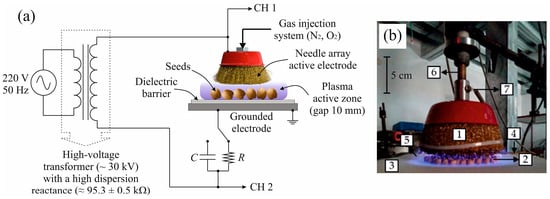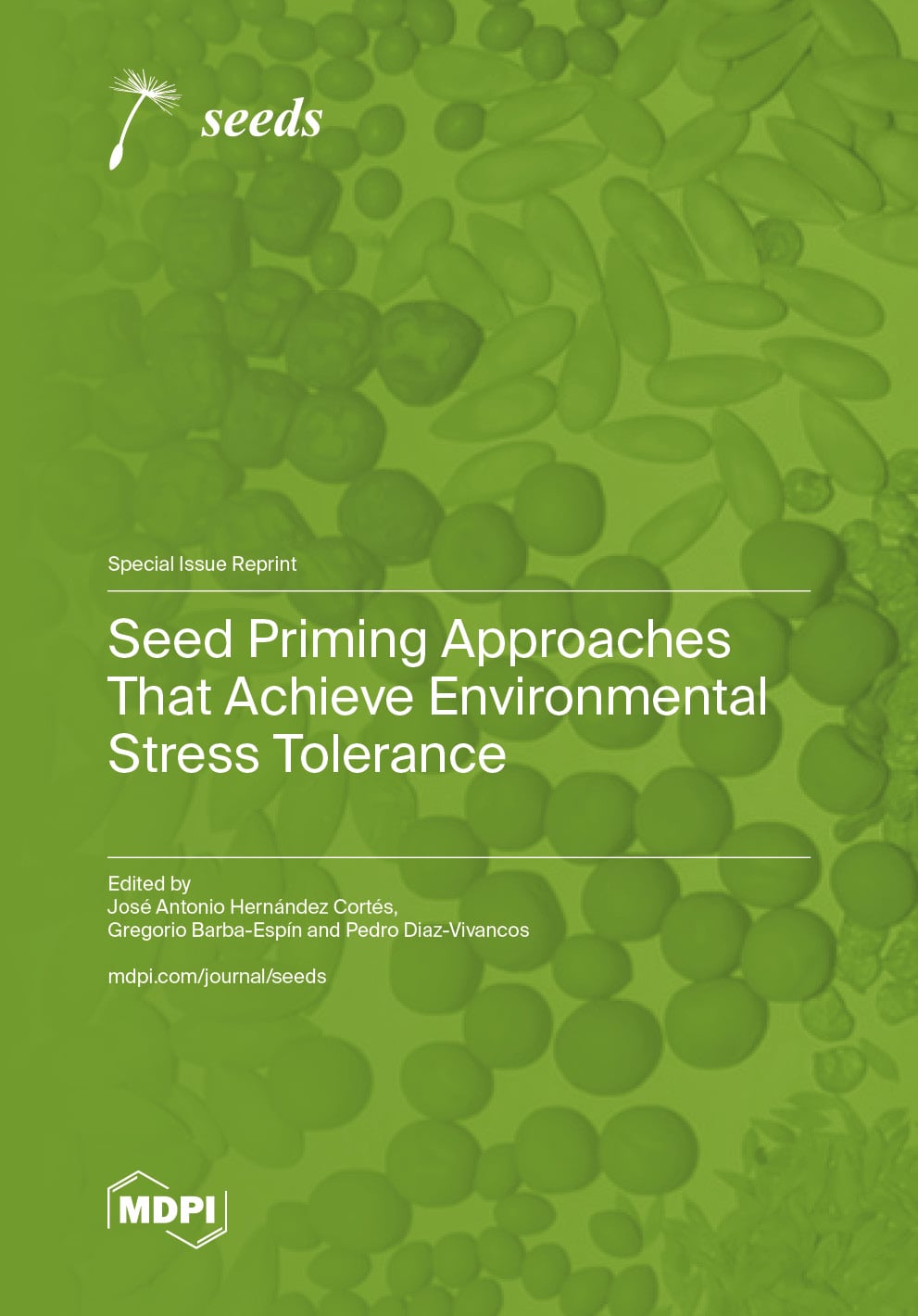- Article
Physiology of Germination and Postharvest Deterioration in Chickpea (Cicer arietinum L., Fabaceae) Seeds Treated with Non-Thermal Plasma
- Ada S. Vélez,
- Brenda L. Fina and
- Juan A. Arguello
- + 6 authors
Chickpea seed quality is highly susceptible to mechanical damage during handling and to rapid deterioration under postharvest storage. Atmospheric pressure Non-Thermal Plasma (NTP) has shown positive effects on seed quality in several species, but its long-term impact on chickpea remains poorly understood. This study evaluated the effect of NTP on the physiological germination process and postharvest deterioration of Cicer arietinum L. (Fabaceae) ’Felipe UNC-INTA’ seeds. Seeds were treated for three minutes with dielectric barrier discharge using O2 and N2 as carrier gases. Results showed that NTP optimized the triphasic germination response in embryo, especially in phases II and III, where radicle protrusion occurred earlier in treated (27 and 30 h) than in control (33 h) seeds, accompanied with a partition ratio < 1, indicating the roots’ preferential assimilate allocation. Fungal incidence decreased notably, e.g., Aspergillus decreased from 31% (control) to 11% (N2) and 10% (O2). O2-treated seeds exhibited higher germination (94%) than the control (90%) and an 11% reduction in individual electrical conductivity, indicating enhanced membrane integrity. After six months of storage, both treatments delayed aging, maintaining higher vigor than untreated seeds. Overall, NTP emerges as a promising postharvest technology to enhance and preserve seed vigor and viability in C. arietinum.
17 December 2025



